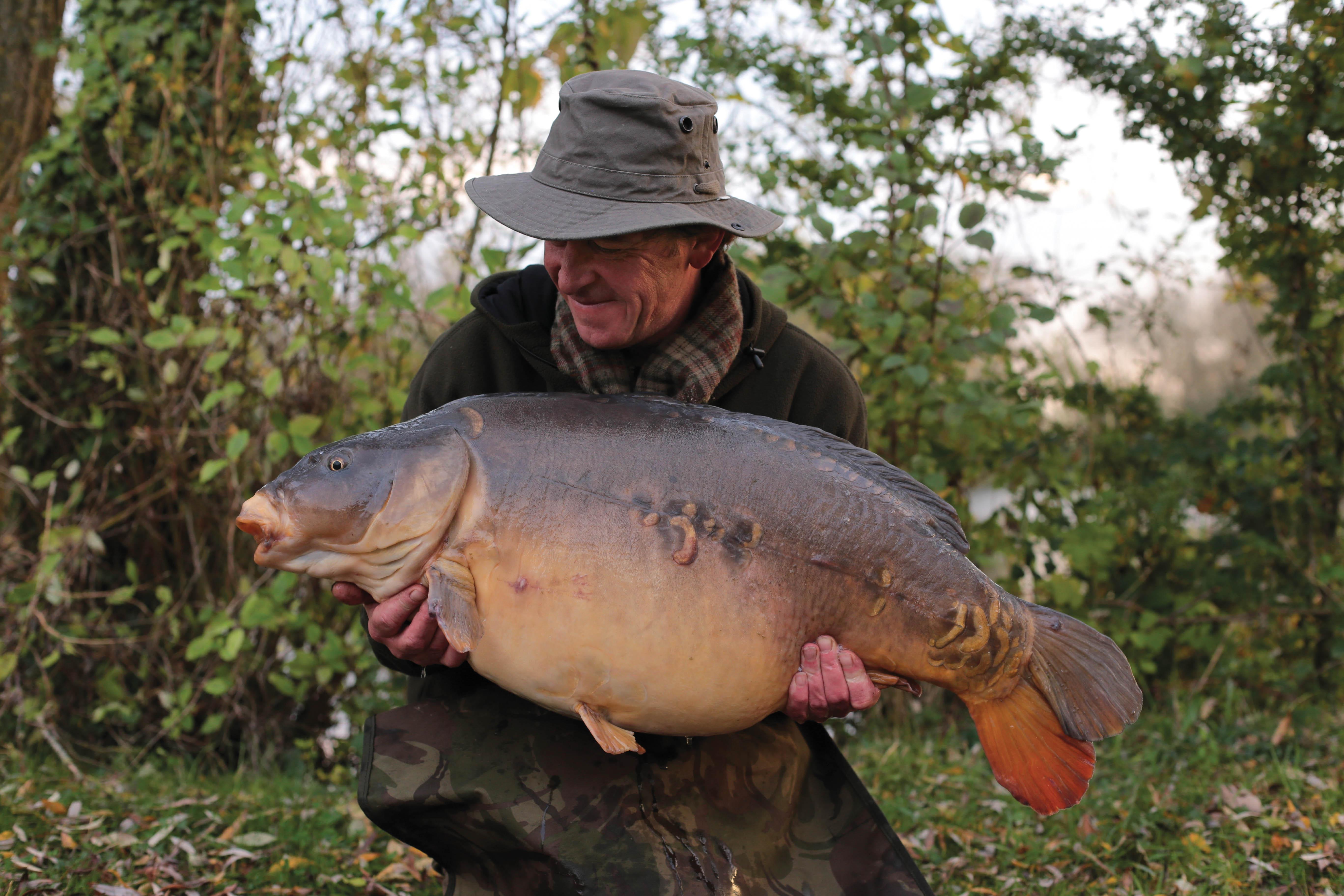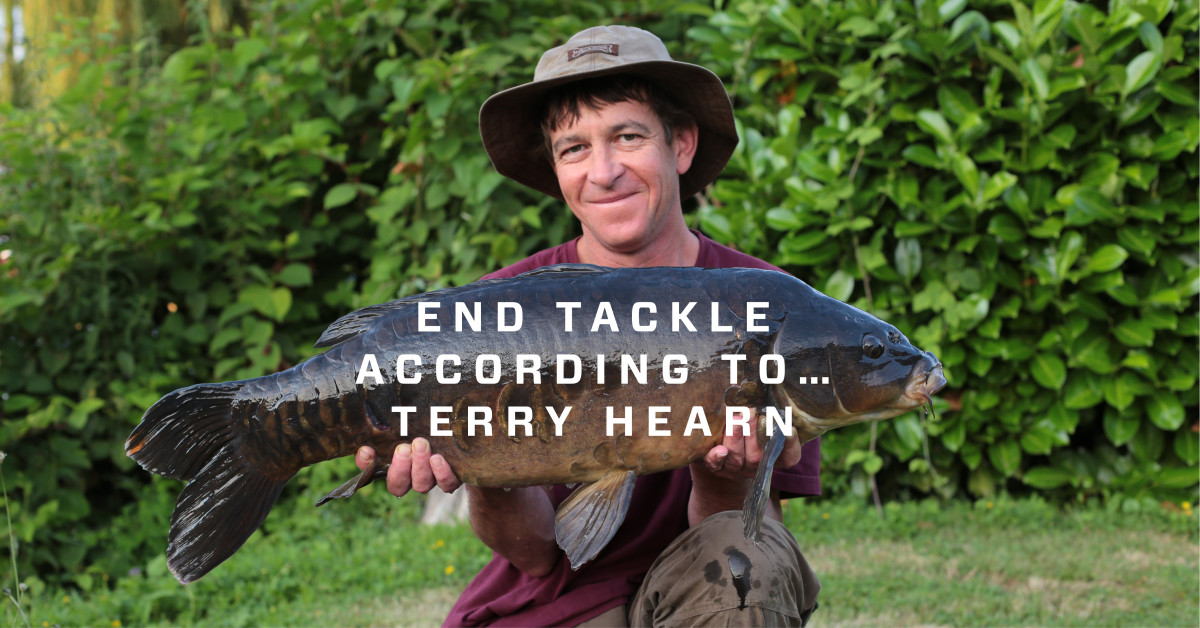
Terry Hearn Talks Rigs!
Big carp royalty, Tel, offers up advice and wisdom when it comes to anything rig-related
1. The game-changing rig moment which changed everything for you was…
“I’m not particularly comfortable calling anything in fishing ‘game changing’, but without wishing to go over old ground again, the Hinged Stiff Link certainly made a big difference, especially the actual pop-up section, which I eventually carried over to the Chod Rig. Add the success of the two presentations together across the whole of the carp world over the past couple of decades, and perhaps we’re getting into ‘game changing’ territory.”
2. The last rig-related item you bought and loved…
“In more recent years, the size 5 Drennan Barbel Hooks have definitely been a favourite. A high percentage of sharp ones straight from the packet, size for size lighter than average, and a shape which has proved perfect for my favoured ‘Flipper Rig’ bottom-bait presentation. The only time I’d think twice about using them is in a close-range, high-impact, snaggy situation, in which case I tend to go for something a little stronger and heavier in the wire.
“It’s certainly not the last item I bought, but if I had to name one item that I’ve truly loved over the years—one that has stood the test of time—then it’d have to be ESP’s original 45lb Leadcore. It’s one of very few items that has remained unchanged over all this time.”
3. On your wishlist for a future end tackle item…
“I’m afraid I’m struggling with this one, and in 2022 there’s very little on my wish list for a future end tackle item. If I’m missing anything then it would be a decent, slightly beaked pattern of small hook, which I’m reminded of each time I go barbel fishing. Every autumn, for over a decade, I’ve spent a chunk of time fishing for barbel on the same small Thames tributary, and right up until last year I used the same hook pattern throughout, namely the original size 10 Korda Wide Gape. They were absolutely perfect: strong, sharp, and just bang on all round, not just for barbel fishing either, as up until running low on them they were also my go-to hook for Zig Rigs.
“Nothing lasts forever, though, and several years back the pattern was changed to one which just doesn’t have the strength, or the shape of the originals. Size for size the new ones were larger, with a slightly longer shank, and when it comes to hooks, one small change can throw everything out of sync.
“Talking of throwing everything out of sync, around the same time, Dynamite’s 10mm Source boilies became a bit larger, new rollers on the machines maybe, but whatever the reason, suddenly they were more like 11 or 12mm. If only using one on the Hair then it might not have made too much of a difference, but when using two, as I favour for my barbeling, the effect was doubled, and suddenly the relation of hook to hookbait was way off. “Just change to a size 8 then”, I hear you say, but no, they were too darn big!”
4. Who influences you when it comes to rigs?
“Where rigs are concerned it’s the fish, the circumstances and the bait I’m using which influence me most. If we change the question to ‘who has influenced me in the past’, then Frank Warwick showing me his early ‘up the leader’ presentation twenty odd years ago, before it was called the Chod Rig, definitely had a big impact. I could straight away see that it would work well with my own tried and trusted pop-up section borrowed from the Hinged Stiff Link, which I’d already been using to good effect for a number of years. Without Frank showing me his version then I very much doubt I’d have ever had the confidence, or the brain wave, to have used that pop-up section directly off a length of thick leadcore, i.e without a boom. Who’d have thought it… Frank did!
“Joe Morgan once sent me a rig that he’d been using to good effect, where he’d trapped the Hair at the bend with a piece of silicone tubing, i.e. what I’d now call a ‘Flipper Rig’. Joe’s timing couldn’t have been better, as I’d already been playing with a similar idea myself (as mentioned by Adam [Penning] when he answered these same questions a few issues back), with the Hair leaving the hook just below the barb, which used the weight of the bait to aid turning. I’d actually shown my version in a short film that I’d done with Tight Lines, where I caught one for the cameras whilst using it at Hunt’s Corner in Oxfordshire. The thing is, my version was tricky to cast out any distance without the Hair moving, and so I’d scrapped it.
“Joe’s version trapped the Hair more securely with a short length of 0.5mm silicone, and the only thing that put me off was the Hair crossing the hook’s gape between the Knotless Knot and the hook’s bend. Of course, as unsightly as that Hair crossing the bend looked, it didn’t matter one bit, and Joe’s results showed that it certainly didn’t inhibit hook-holds in any way, which had been my initial concern when playing about with something similar myself.
“Joe’s version, or at least the ones he’d kindly popped in the post for me to check out, didn’t use a shrink tubing kicker on the eye, but I clearly remember Joe writing in his accompanying note that one or two other anglers he’d shown it too did prefer to use a kicker, he’d just found that it was already a mega bottom bait presentation without, especially with the size 8 Wide Gape hooks that he was tying it up with, which already had a slightly in-turned eye.
“All these years on and it’s still my favoured presentation for using bottom-baits straight from the bag, though I definitely like to add a kicker, even with a hook pattern that has an in-turned eye.”
5. What do you have an excessive collection of?
“Hooks, going back thirty years plus! I’ve a big plastic tub in my fishing room stuffed to the brim with them. Not much else I can say there. Most of them no longer see the light of day, but from time to time I do go through them when I’m looking for something specific, i.e a decent size 10 wide gape, as earlier mentioned!”
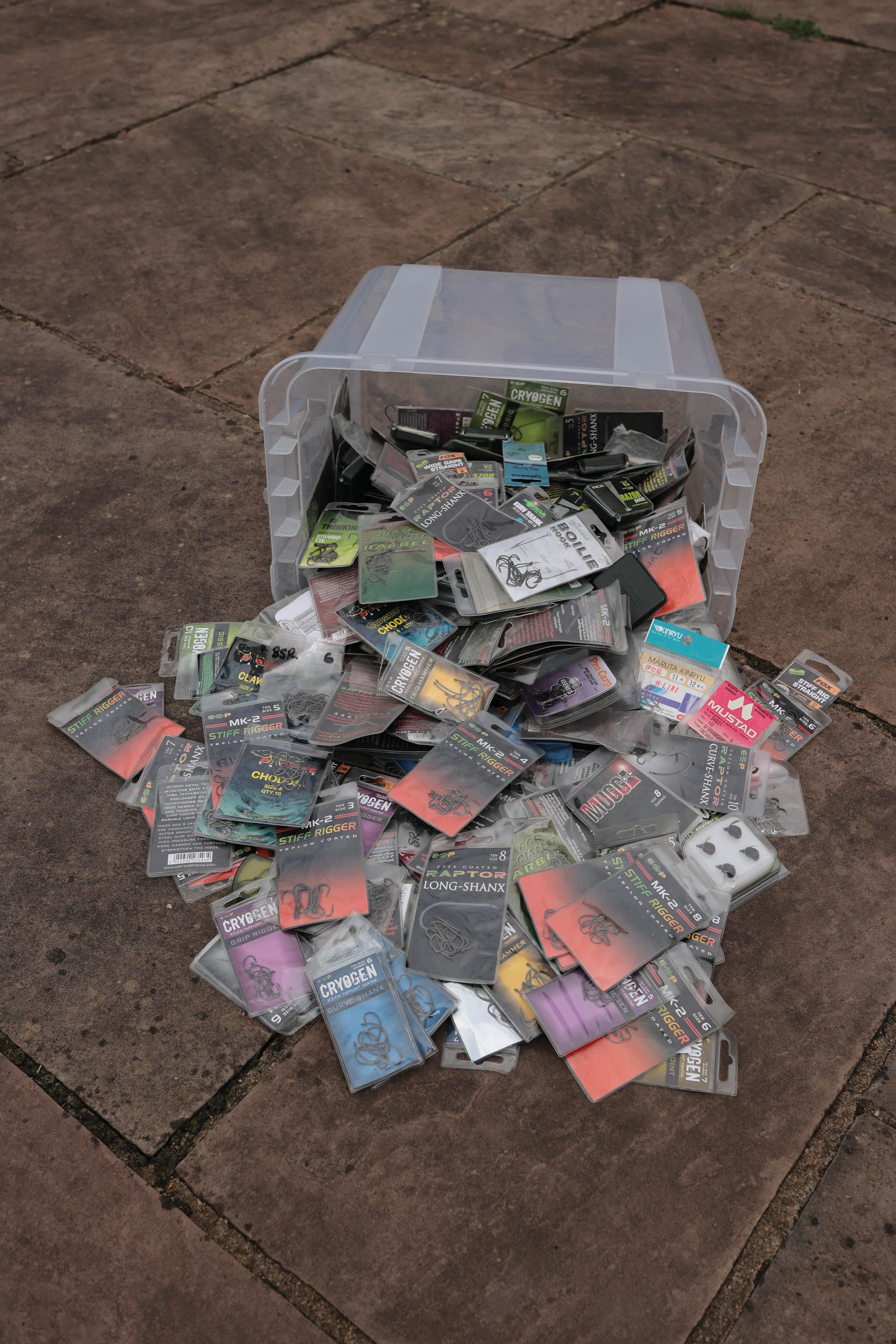
6. Where are we regarding rig innovation at the moment?
“We’re already well past pioneering where rigs are concerned, and much of the tweaking and changing I see today has already been done in the past. A decent hooklink material and a strong, sharp hook is what’s most important, something consistent and easy to tie up. I can’t imagine how confusing the world of rigs must be to any newcomers, and being honest, I’m glad I’ve been fishing long enough to see through it all. There’s too much choice as it is.”
7. One small tweak you made to a rig which had a massive outcome…
“Changing from Drennan Continental Boilie Hooks to the brand new MK1 Stiff Riggers all those years back, and at the same time, changing the Hinge Stiff Link’s pop-up section from the softer Amnesia to the stiffer and more malleable Bristle Filament, which I was able to create a curve with.
“The Stiff Riggers were basically a straight-pointed version of the Boilie Hooks, which is all I’d asked ESP for in the way of improvement (along with the in-between sizes, which meant the arrival of the size 5’s—an industry first). The Bristle Filament was something that Adam sourced at the same time, which would have been around ‘98. The original Bristle Filament sample was in black, but for obvious reasons we figured that a clear version would be better for release. Well done mate, who’d have thought it’d have led to something so popular!
“Also, changing the medium sized Drennan ring at the base of the pop-up section to a size 10 High Performance Swivel, which effectively turned the Hinge Rig into a ‘spinner rig’, though well before the term was ever used. These were all changes made at the same time. The Hinge Rig was already mega before those little tweaks, but as far as rig innovation goes, I’d say those changes turned a great pop-up rig into something that is still hard to beat over twenty years on.”
8. Hand sharpening hooks is…
“I’m never keen on answering questions like this, because the truth is that a great deal of the anglers sharpening their hooks today couldn’t tell the difference between one that was truly sharp, and one that I’d personally discard, including the ones that they’ve lovingly sharpened.
“Everyone has their own method of testing hook sharpness, but for me, it’s always been the good old nail test. At this point I’m kind of struggling to go any further, as even if I describe the nail test yet again, I already know that most people don’t know how to put it into action. I see anglers attempting to test their hooks on their nails and it’s painful to watch. It should be a simple case of holding the hook between forefinger and thumb, and then with the gentlest of pressure, and with the hook held at the appropriate shallow angle, running the point across a nail. A truly sharp one should instantly stick, no slipping, sliding or scratching, yet still I see anglers stabbing hooks into their nails with the points facing directly down, completely alien to how a hook would work in a real world situation when it’s attached to a hooklength
in water.
“I’ll finish this one by saying that you can’t ever have a hook which is too sharp, and so if you’ve a pattern and size of hook which you really like, but they aren’t up to scratch when it comes to sharpness, then by all means sharpen them yourself. Personally, I don’t use any hooks which aren’t already super sharp straight out of the packet, and hand on heart, I assure you that I’m as fussy as it gets. It means that in my search for the very sharpest I have to discard many, many different hooks, in many patterns and many sizes, and from many different companies, but the end result is always the same, and I’d never, ever put myself in a situation where the angler fishing next door is using sharper and more effective hooks than I am.
“Also, perhaps the real test should be done at bite time, i.e dawn, after they’ve been laying on the bottom all night. Each to their own, just do whatever gives you the best results, but if I were to give some of my carefully, well chosen hooks to anglers that generally prefer to sharpen, I think they’d soon stop bothering.”
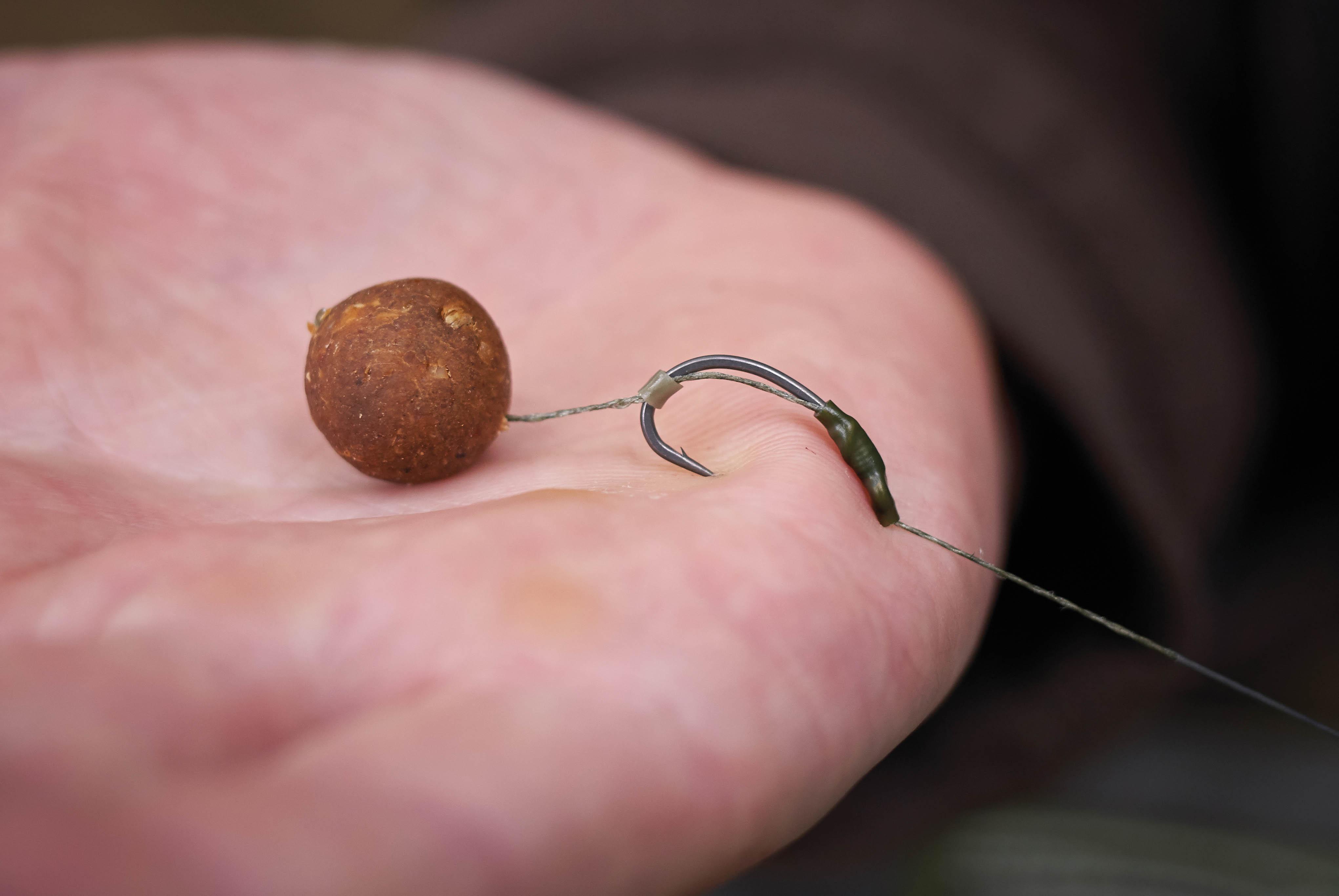
9. When it comes to hooklink materials, which do you favour?
“I’m talking about bottom baits here… For a long time now, since Kryston first released Snake-Bite in the late 90s, I’ve favoured a coated hooklink, more than anything for its resilience and anti-tangle properties. Over the past few years my favourite hooklink has been ESP’s Loaded, in the Semi-Stiff for larger and heavier hookbaits, and in the Soft for smaller and lighter balanced baits such as corn, wafters, and casters, generally with a longer, supple section stripped back to bare braid at the hook end. However, more recently I’ve started playing about with soft braids again, generally in situations where I want to go really short, like 3-4 inches. With something heavy, such as an 18mm boilie I don’t believe it makes much odds, but for smaller and lighter hookbaits, soft braids can obviously provide a better, more natural presentation.”
10. What is your ideal floater set-up?
“For closer range stuff I still like using the original Drennan Controller Floats in either 5 or 10g. I’ve found no reason to change them, they worked well twenty odd years ago and they still work well today. If I’m fishing further out, say thirty yards plus, then the inline bolt machine type controllers in 15g plus are the ones. They cast and hold their position better, especially when correcting any bow in the line created by wind, plus they obviously hook the fish that much more efficiently, especially when fishing too far out to see your hookbait so well.
“Hooklink-wise, I use a decent mono in around 10lbs breaking strain, generally around six-feet in length to keep the hookbait and controller well separated, and as far as hooks go, something small, not too thick in the wire and super sharp. For many years my preference was always size 10 Big T’s, which unfortunately have now been discontinued, though I’ve still got a few treasured packets in my collection. However, the size 10 Drennan barbel hooks are pretty much the same pattern, and, if I’m Hair rigging either a real floater or a whittled down pop-up for a hookbait, then more recently these have been my go-to. Saying all that, I’ve also done a bit with the newer Enterprise Tackle Mixer hookbaits, the later design with the foam inserts, and with these I’ve found the barbel hooks in a slightly larger size 8 to be ideal.
“I really like the fake Enterprise Mixers and wish I’d got on them a bit earlier. Having the hook sitting clear of the water and out of sight makes a big difference, and it definitely results in less refusals at the very last second. I did play with something similar myself many years ago, pictured in my second book, which Brian Sefton showed me when I was fishing Horseshoe Lake one year, but those were made from a weighted piece of cork with a slit cut into the top of them to hold the hook, and as such they couldn’t take a good cast so well.
“The only tricky thing with the fake Enterprise Mixers is unhooking the fish, as having the hookbait mounted directly on the hook’s shank makes it harder to pop them out when you’ve got one in the net. Definitely worth having a pair of forceps at hand. They also make your hook a bugger to get out when you happen to stick one in your finger, as I found out a couple of weeks back!
“As for over-depth anchored floaters, as I tend to use in windier conditions, or when I need to keep a hookbait in the hot zone or up against features for longer, then it’s pretty much the same set-up as I’d use with a controller float, but with a little lead, generally an ounce or an ounce-and-a-half, fished running but with a backstop behind it. Basically the same as how I’d fish a bait suspended off the bottom, i.e a Zig Rig. As a little side note, it’s worth pointing out that a small running lead with a backstop is easily able to slide up your main line whenever a hooked fish has ploughed through weed, whereas an inline lead, or one fished on a clip, won’t do that so efficiently, not with a long and stretchy hooklength. Small leads are obviously better when playing too, enabling you to keep a more direct line to the fish.
“Heavy leads really aren’t for ‘long link’ fishing, and with tiny little hooks they aren’t necessary either, not unless you happen to be whacking one to the horizon. Even then, you can cast a one-ounce lead a fair old way when matching the whole presentation to a 10 or 12lb main line, and when it comes to netting one on a ten-foot hooklink with a lead bouncing around at the tip, lighter is always going to be better.”
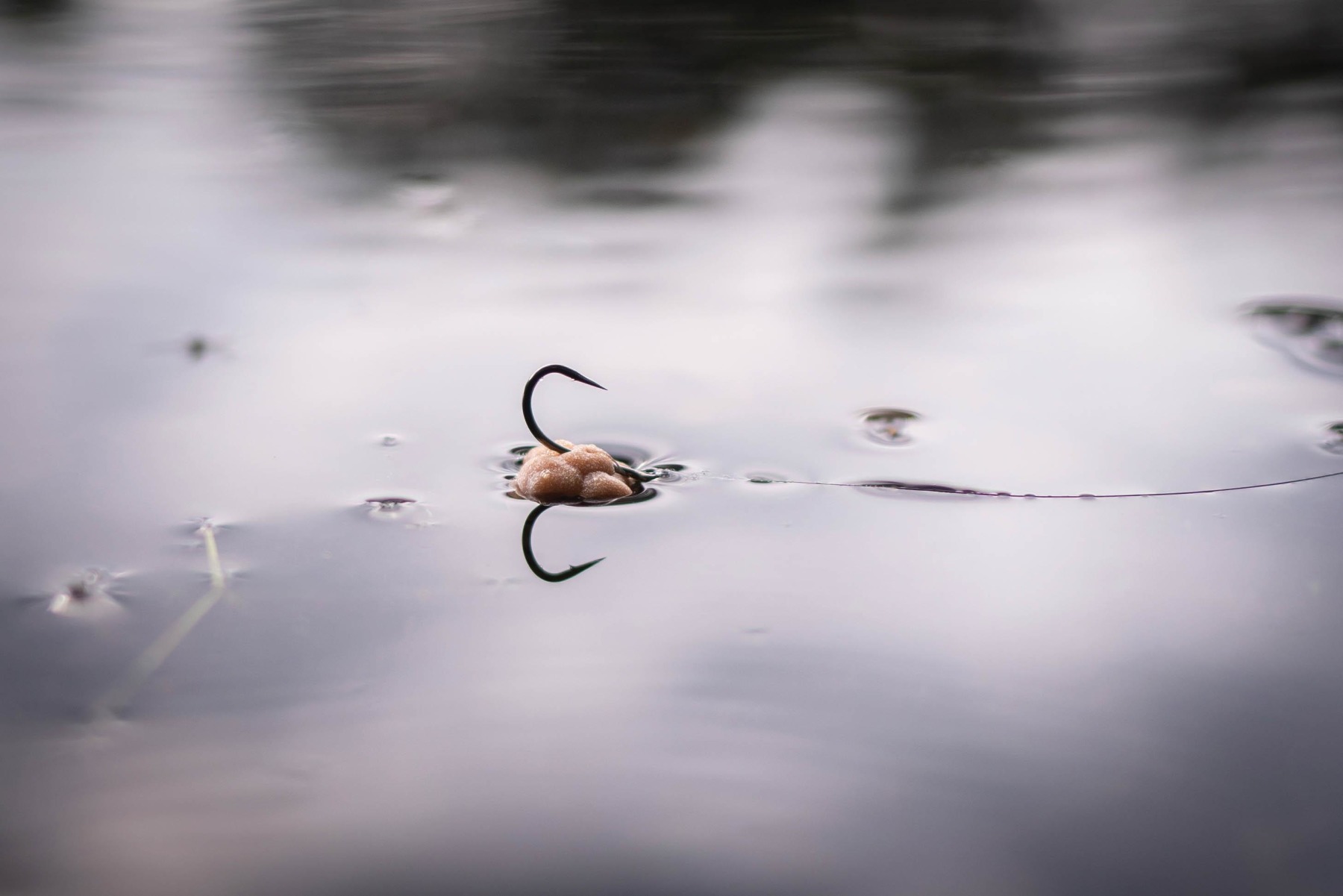
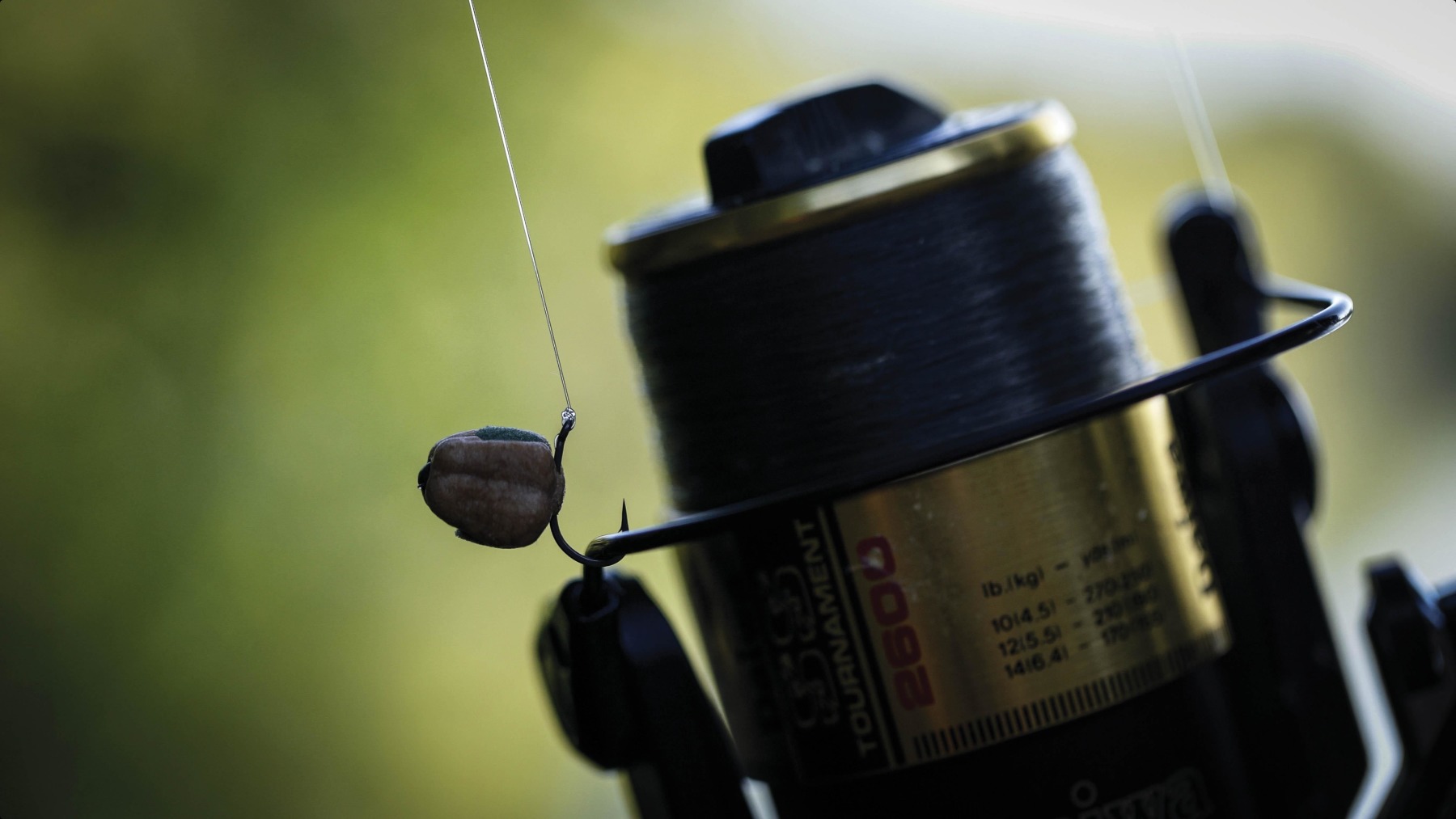
11. How do you like to mount your hookbait?
“For bottom baits I just thread them on with a baiting needle—why complicate things? And for corkball pop-ups I prefer to tie them on, simple.”
12. When it comes to hookbait choice, what do you opt for?
“Whatever bait I happen to be using on the day. If we’re talking pop-ups, then I’ve always made my own, and from time to time I’ve used the ready-made cork-dust versions from Dynamite, which I tend to flavour with one of Rod Hutchinson’s classics, more often than not, flavours that are no longer available today.”
13. Finish the sentence: I see end tackle products getting…
“…More and more complicated, and incredibly confusing to newcomers. Keep it basic, just concentrate on putting a good bait attached to a sharp hook and a reliable hooklink in the right place at the right time, and you can’t go far wrong. Put everything else into watercraft and location.”
